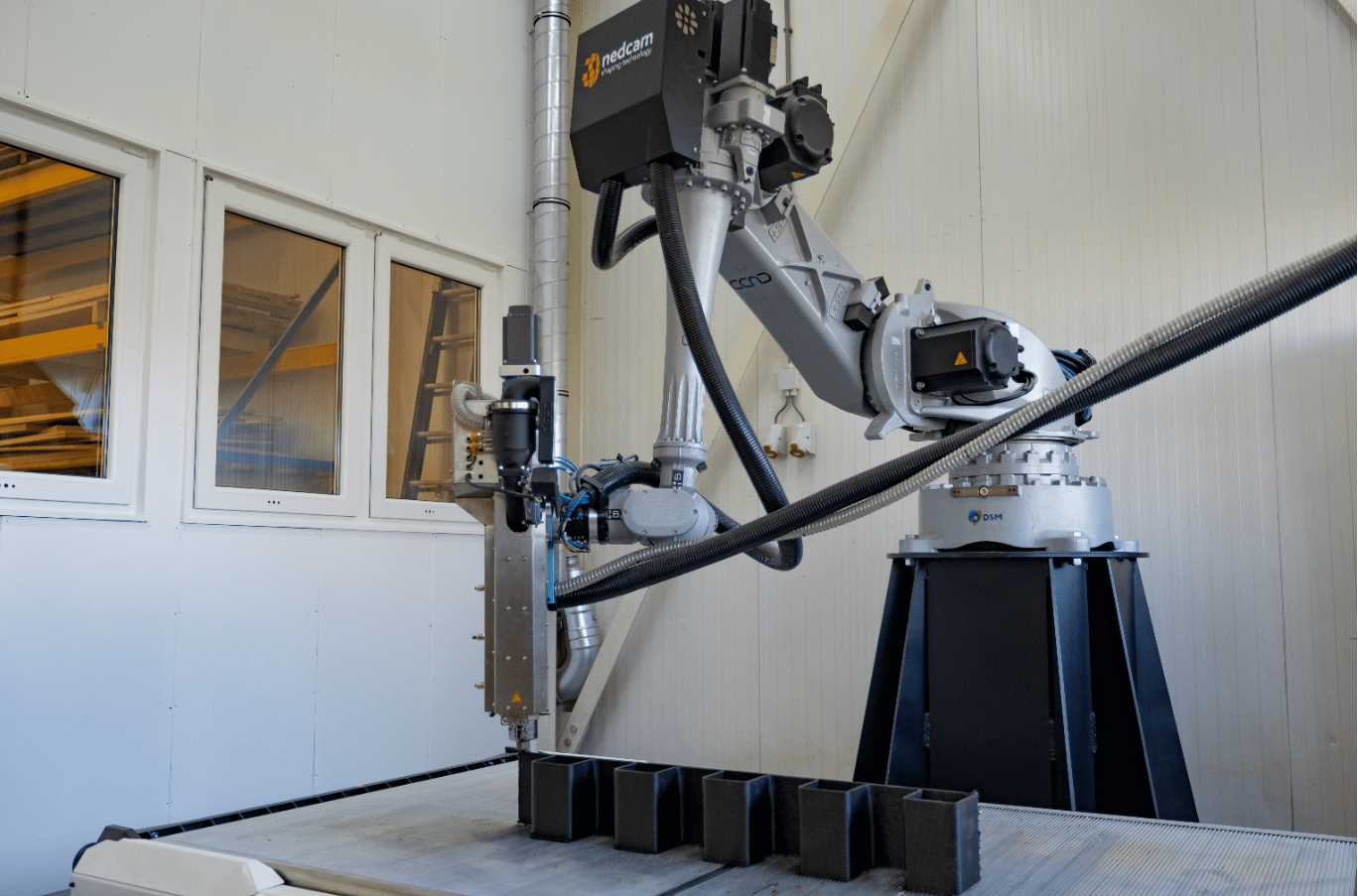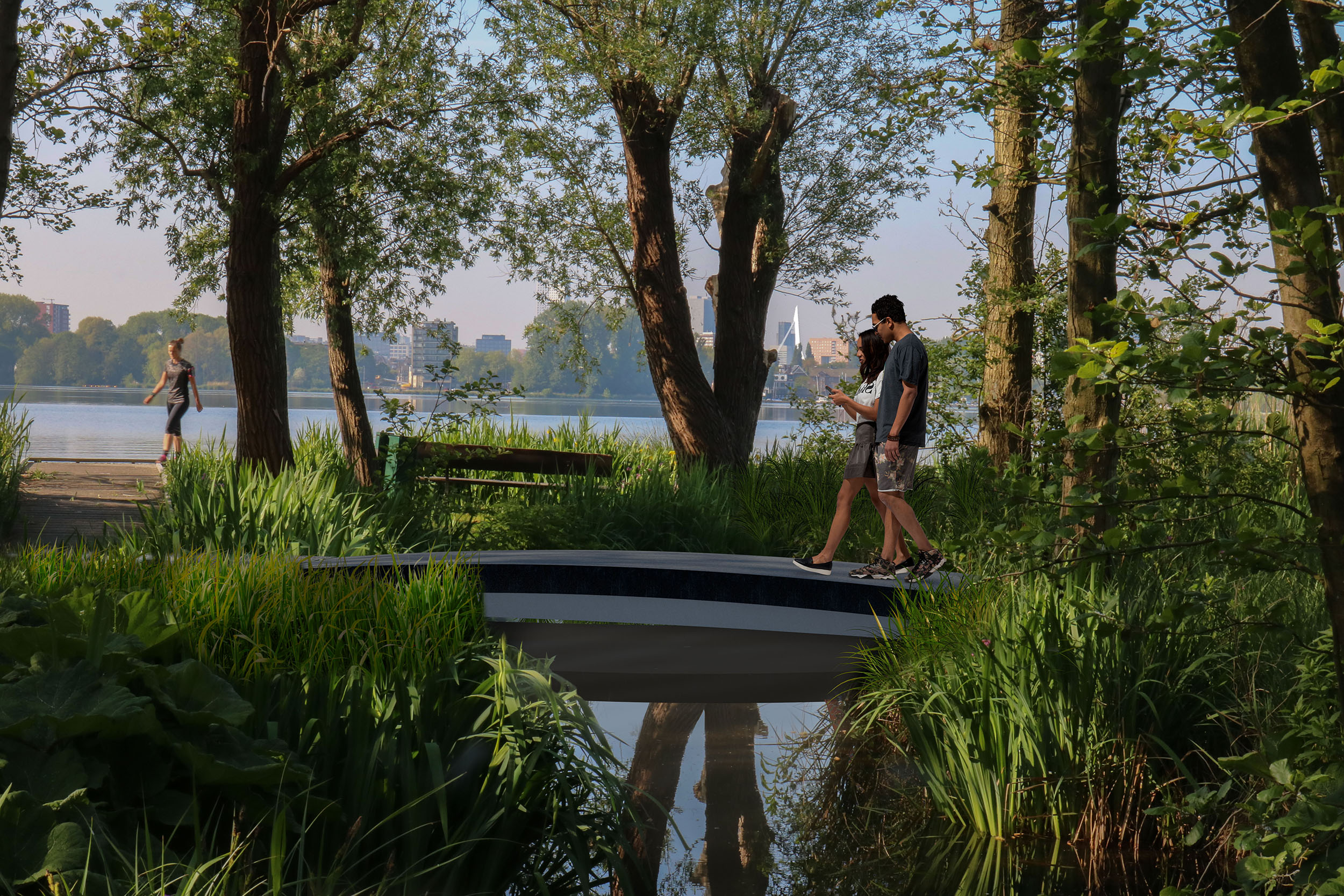Global science-based company and material producer DSM has partnered with 3D printed part supplier Nedcam to develop new applications for scalable Fused Granulate Fabrication (FGF) 3D printing.
Nedcam recently installed a CEAD AM Flexbot robotic 3D printer at its Dutch-based Heerenveen site, and utilizing DSM materials, it now plans to offer large-scale commercial 3D printing production services. As part of their collaboration, the firms will also develop and test new FGF materials, processes and applications for use within the marine, renewable energy, construction and infrastructure industries.
“Nedcam provides an important link between product development and market demand,” said Pieter Leen, Application Development Specialist at DSM. “Their printing activities will help to accelerate the adoption of additive manufacturing.”
“We believe that FGF is a critical technology to address the need for manufacturing structural and large-size components using highly-filled polymers at competitive production lead times.”

Nedcam and DSM’s big ambitions
In the initial stages of the newly-agreed partnership, Nedcam will use DSM’s pellet-based 3D printing materials to produce specialist parts for large-format manufacturers. The company already provides a range of services using its 3D Shaping Technology, and now that it’s acquired a CEAD Flexbot 3D printer, it’s aiming to target a broader range of construction customers.
As the companies’ collaboration progresses, they will seek to develop new applications of the FGF 3D printing technology, on which the CEAD system is based. FGF additive manufacturing is similar to the Fused Filament Fabrication (FFF) process, but it replaces filament with chopped, pelletized feedstock as its source of material.
Unlike FFF, FGF is capable of converting raw material directly to the print bed, and its screw-extrusion system enables higher volumes to be printed at once. Although FGF is becoming increasingly common, it’s still not as freely-available as its FFF counterpart. According to a study from 2018, FGF has the potential to be more eco-friendly than existing methods, but it’s held back by a lack of accessibility.
Seeking to build on the promise of FGF, Nedcam and DSM have committed to working closely with Royal HaskoningDHV to develop new materials, processes and applications for the technology. Creating more recyclable components will also be a significant part of the project, as many of Nedcam’s existing plugs and molds are made using single-use glass fiber reinforced composites and steel.
Disposable parts create millions of tons of waste every year, and the companies are seeking to develop recyclable materials, and an overall more sustainable printing process. “We absolutely want to reduce the waste in our production process and go circular,” said Erwin van Maaren, Co-founder of Nedcam.
“By combining DSM’s 3D printing and thermoplastics expertise, with our production knowledge and production facilities, we want to take the necessary steps toward a sustainable and fully circular model production process,” he added.

DSM’s history of FGF development
Based in the Dutch city of Heerlen, DSM is known as a producer of 3D printing materials, and it has an extensive portfolio covering the PBF, FFF and Stereolithography (SLA) printing processes. The company is continually adding to its range, and in the last month alone, it has launched a new line of glass-filled polypropylene (PP) pellets, and a new PP powder portfolio.
DSM has also played a significant role in the recent development of FGF 3D printing, and its adoption within construction settings. Working with large-scale 3D printer supplier CEAD, DSM pursued the development of new feedstock, tooling and end-use applications for FGF. As part of the deal, the company also purchased a six-axis robotic 3D printer from CEAD, for the purpose of material development and profile optimization.
More recently, DSM has collaborated with 3D printing engineering and consulting firm Juggerbot 3D, to explore “the untapped potential of FGF printing.” The development program leveraged JuggerBot’s P3-44 pellet 3D printer, to develop a glass-reinforced PET product for producing large-scale automotive and construction parts.
Since then, the company has been involved in several large-scale building projects with fellow Dutch-based firms. Working with long-term partners Royal HaskoningDHV and CEAD, DSM helped to design the “world’s first” lightweight 3D printed footbridge. Then, in July 2020, the company’s FGF materials were later used to create a sustainable bridge in the Dutch city of Rotterdam.
In DSM’s latest partnership with Nedcam, the firm will look to build on its eco-friendly achievements of the past, and develop new large-scale structures, to test the limits of FGF technology.
The levelling-up of large-format printing
Large-scale concrete 3D printing has experienced a boom in popularity recently, and a number of companies have commercialized their own variations of the technology in recent years.
3D printing construction start-up Mighty Buildings has raised $30 million in funding towards the development of proprietary 3D printing method. The company’s unique extrusion-based technique is based around an acrylic polymer, which hardens almost immediately after post-curing.
Danish 3D printing construction firm COBOD provided a live demonstration of its 3D printing technology at the international Bautec construction exhibition earlier this year. The company’s modular system is capable of printing buildings with measurements of 12m in width, 27m in length and 9m in height, at speeds of up to 100cm per second.
Elsewhere, ACCIONA, a Spanish conglomerate group dedicated to infrastructural management, has opened a new global additive manufacturing center in Dubai. The center reportedly features the world’s largest concrete powder bed 3D printer, which is designed to build structures for the architectural, urban and construction sectors.
Nominations for the 2020 3D Printing Industry Awards are still open, let us know who is leading the industry now.
The fourth edition of the 3D Printing Industry Awards Trophy Design Competition is now underway. Enter your design for the chance to win a CraftBot Flow 3D printer.
To stay up to date with the latest 3D printing news, don’t forget to subscribe to the 3D Printing Industry newsletter or follow us on Twitter or liking our page on Facebook.
Are you looking for a job in the additive manufacturing industry? Visit 3D Printing Jobs for a selection of roles in the industry.
Featured image shows a CEAD AM Flexbot 3D printer. Photo via DSM.



